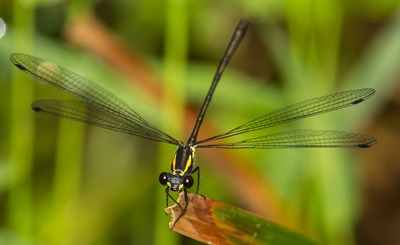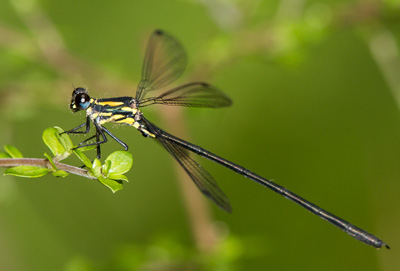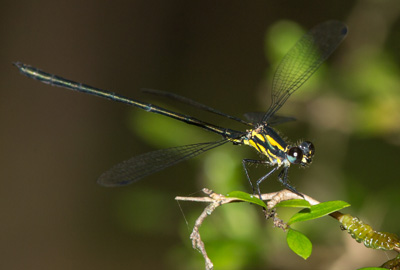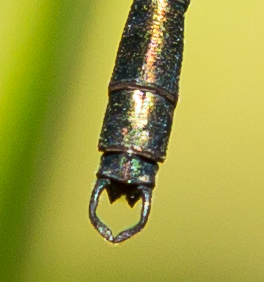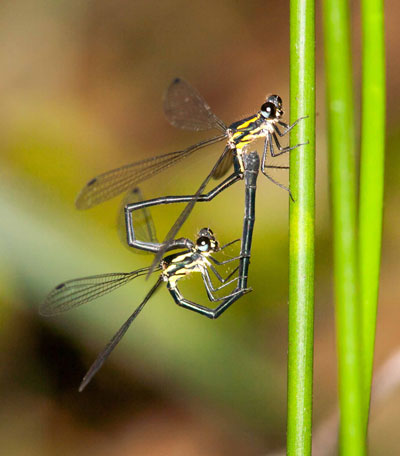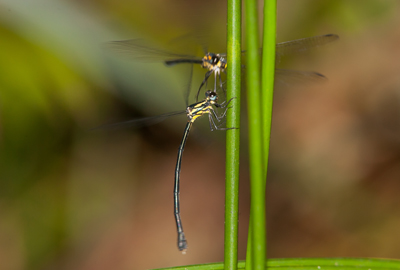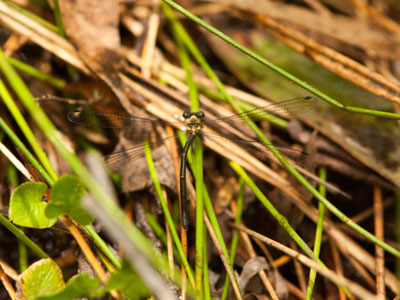Griseargiolestes fontanus (Tillyard, 1913)
SPRINGS FLATWING
Family Megapodagrionidae
On the first sunny day after many rainy and cloudy days, I ventured down to the nearest spring-fed dam to see what was about. A bright blue blur appeared just in front of me and materialised into the most beautiful male Whitewater Rockmaster. Of course I hadn’t brought the camera so bolted back to the house to get it. The Rockmaster was no where to be seen when I returned.
While having a very thorough look for the Rockmaster, I spotted a Flatwing damselfly with very yellow thoracic markings. I thought it might have been a Milky Flatwing which I have photographed at this dam previously. However the markings were different to the Milky Flatwing and it had no pruinescence.
There was just one male sitting near where the water from a spring entered the dam. Later that day I revisited the dam The place where I saw the Flatwing was now in shadow so I followed the trickle of water up towards the spring. In a sunny spot I saw 2 of the Springs Flatwings flying around.
This dam is surrounded on 3 sides by bush mainly T tree which is quite thick around the spring. It gets mainly morning and early afternoon sun.
Fortunately these small damselflies stay perched in one spot for quite a while and allow you to get very close if you approach slowly.
